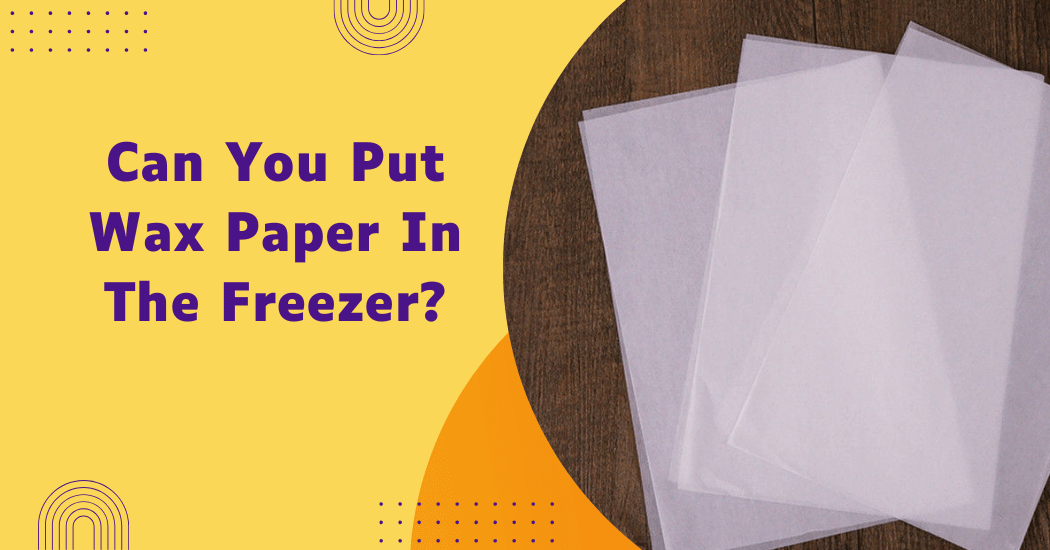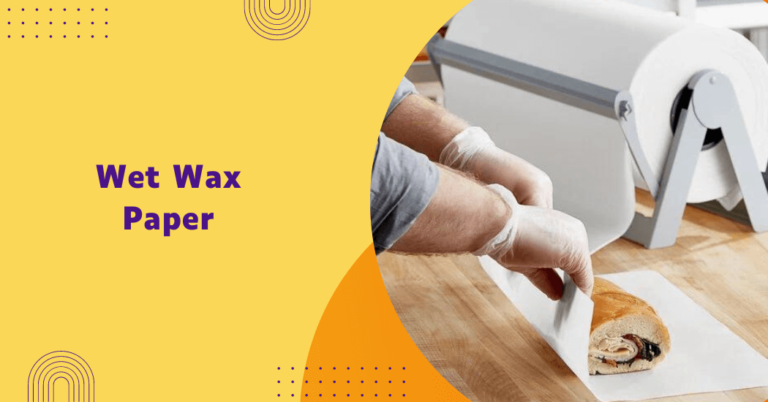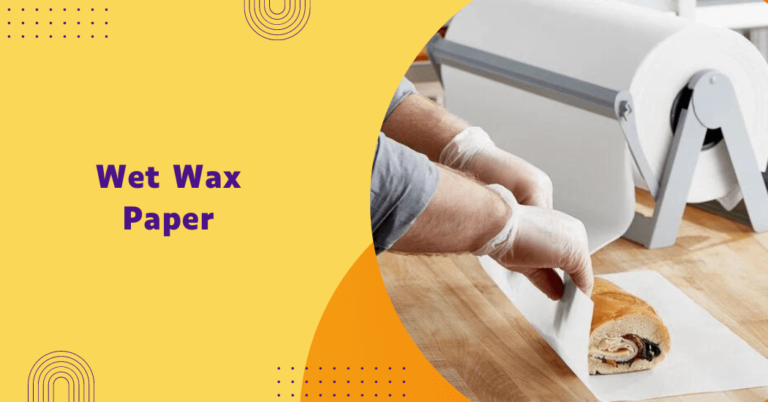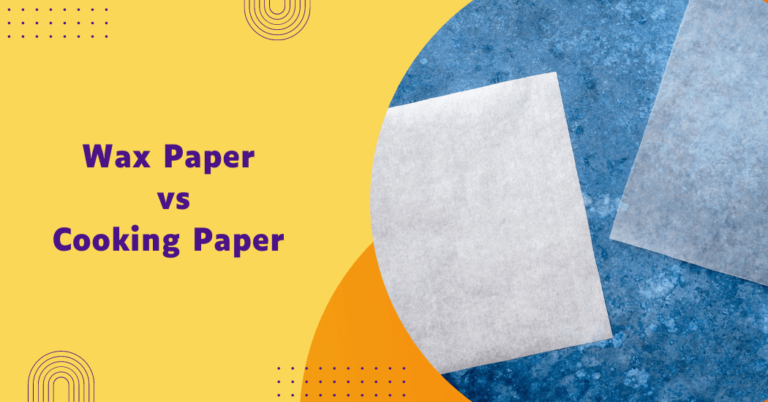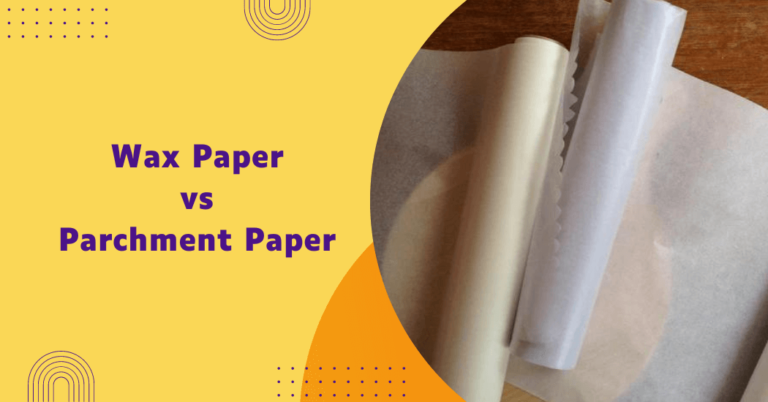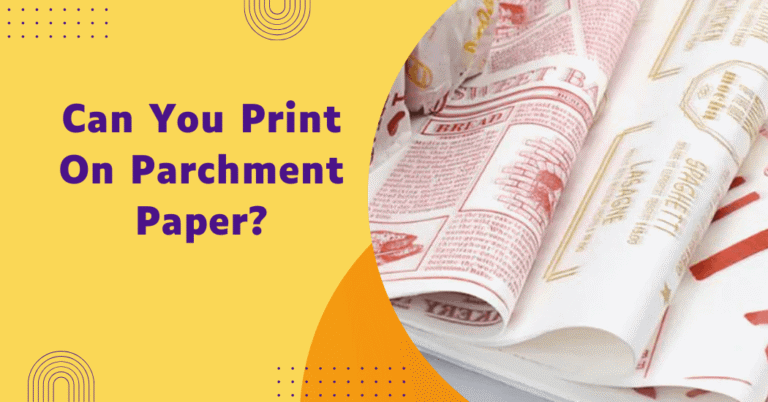Can you put wax paper in the freezer?
When it comes to food storage and preservation, many people wonder, “Can you put wax paper in the freezer?” This question is crucial for anyone looking to keep their food fresh while avoiding unwanted contamination or spoilage.
Wax paper is a common household item, often used for baking and food prep but its suitability for freezing purposes is not always clear. In this guide, we will delve into the practicality of using wax paper in the freezer, its pros and cons and offer expert tips to ensure your food remains fresh and protected.
Whether you’re a novice in the kitchen or a seasoned cook, this guide will provide valuable information to help you make informed decisions when it comes to using wax paper in the freezer.
What is wax paper?
Wax paper, also known as waxed paper, is a type of paper that has been coated with a thin layer of wax to make it moisture-resistant and non-stick. This versatile kitchen staple is commonly used for lining baking trays, wrapping food items and covering surfaces to prevent messes during food preparation.
The wax coating effectively creates a barrier that prevents the paper from absorbing liquids, making it ideal for a variety of culinary tasks. Additionally, wax paper is often preferred over plastic wraps for its environmentally friendlier properties, as paper is biodegradable and more sustainable.
Put wax paper in the freezer
Yes, you can put wax paper in the freezer. Wax paper is designed to be moisture-resistant and non-stick, making it suitable for use in the freezer.
It also has a low freezing point and can withstand freezing temperatures without cracking or becoming brittle. This makes it a convenient option for storing foods in the freezer, such as breads, cookies and meats.
However, it is important to note that wax paper is not as durable as freezer paper or aluminum foil and may not provide the same level of protection against freezer burn for longer storage periods. For short-term freezing, wax paper is a convenient and effective option.
Factors to consider when using wax paper in the freezer
When using wax paper in the freezer, consider the following factors to ensure optimal performance and food safety:
- Temperature resistance: Wax paper can withstand freezing temperatures of up to -18°C (0°F), making it suitable for short-term storage in the freezer. However, if exposed to higher temperatures or left in the freezer for an extended period, it may become brittle and lose its effectiveness.
- Type of food being stored: Wax paper is best used for storing dry or non-greasy foods in the freezer. Foods with high moisture content, such as meats and sauces, may cause the wax coating to break down and compromise the barrier it provides.
- Moisture resistance: Wax paper is designed to be moisture-resistant, which helps prevent foods from drying out or becoming soggy while in the freezer. However, if the food item has a high moisture content, it may still cause the wax paper to become damp or disintegrate.
- Suitability for different food types: While wax paper is suitable for most foods when frozen, some foods may need additional protection, such as meats that are prone to freezer burn. In such cases, it may be advisable to use a more robust option like freezer paper or aluminum foil.
- Duration of storage: Wax paper is ideal for short-term freezing but for longer periods, it may not provide the same level of protection as other options. It is recommended to use wax paper for foods that will be consumed within a few weeks.
- Labeling: To ensure food safety and avoid confusion, it is essential to label all frozen items with the date and contents before placing them in the freezer. This will help you keep track of how long the food has been frozen and when it needs to be consumed.
Benefits of using wax paper in the freezer
Here are some of the benefits of using wax paper in the freezer:
- Convenience: Wax paper is readily available and easy to use, making it a convenient option for short-term freezing.
- Environmentally friendly: Wax paper is biodegradable and more sustainable than plastic wraps, making it an environmentally friendly choice.
- Cost-effective: Compared to other freezer storage options like aluminum foil or freezer bags, wax paper is a more affordable option.
- Moisture-resistant: The wax coating on the paper provides a barrier against moisture, preventing foods from drying out or becoming soggy.
- Non-stick: The non-stick properties of wax paper make it easy to remove frozen food items without any mess or sticking.
- Versatility: Wax paper can also be used for a variety of other kitchen tasks, such as lining baking trays or wrapping sandwiches, making it a versatile tool in the kitchen.
- Prevents food from sticking: The non-stick properties of wax paper make it perfect for freezing foods without the worry of them getting stuck to the surface.
- Maintain food freshness: Wax paper’s moisture-resistant coating helps retain the freshness and flavor of food items while in the freezer, making it an ideal option for short-term storage.
Potential issues with using wax paper in the freezer
While there are many benefits to using wax paper in the freezer, it is important to be aware of some potential drawbacks:
- Not suitable for long-term freezing: Wax paper may not provide sufficient protection against freezer burn for longer storage periods.
- Limited temperature resistance: Unlike other freezer storage options like aluminum foil or freezer bags, the wax paper has a lower temperature resistance and may become brittle if exposed to extremely cold temperatures.
- May not be ideal for all types of food: Foods with high moisture content may cause the wax coating to break down, compromising its effectiveness as a barrier.
- May not prevent odors from spreading: Wax paper does not have a strong seal like plastic wraps, so it may not prevent odors from spreading between different food items in the freezer.
- Not as durable as other options: Compared to freezer paper or aluminum foil, wax paper is not as robust and may tear or become damaged during freezing or thawing processes.
Overall, using wax paper in the freezer can be a convenient and cost-effective option for short-term storage of certain foods. However, it is important to consider the factors mentioned above and choose the appropriate storage option based on your specific needs and preferences.
Tips for using wax paper in the freezer
Here are some tips to keep in mind when freeze wax paper:
- Wrap food tightly: To prevent air from entering and causing freezer burn, make sure to wrap foods tightly with wax paper before placing them in the freezer.
- Choose appropriate storage containers: When using wax paper in the freezer, it is best to use rigid containers or bags that will help keep the food firmly wrapped and protected.
- Use multiple layers for added protection: For more delicate foods or longer storage periods, consider using multiple layers of wax paper to provide an extra barrier against moisture and odors.
- Avoid using in high-moisture environments: Wax paper may not be suitable for freezing highly moist foods like soups or sauces. In such cases, consider using a more robust option like aluminum foil or freezer paper.
- Label and date all frozen items: To avoid confusion and ensure food safety, remember to label and date all frozen items before placing them in the freezer. This will also help you keep track of how long the food has been stored.
- Store in a flat position: To prevent any shifting or potential damage to the food, it is best to store wax paper-wrapped items in a flat position in the freezer.
- Thaw properly: When ready to use frozen items wrapped in wax paper, it is important to thaw them properly in the refrigerator or use other safe methods to prevent any bacterial growth.
Alternatives to using wax paper in the freezer
If you are looking for alternatives to using wax paper in the freezer, here are some options to consider:
- Freezer paper: Freezer paper is a more durable and moisture-resistant option than wax paper and can be used for longer storage periods.
- Aluminum foil: Aluminum foil provides excellent protection against freezer burn and is ideal for freezing foods with high moisture content.
- Vacuum sealing: Vacuum sealing removes all air from the packaging, providing optimal protection against freezer burn and extending the shelf life of frozen foods.
- Parchment paper: Parchment paper is another non-stick option that can be used in the freezer, although it may not provide as strong of a barrier against moisture and odors.
- Glass or plastic containers: For storing larger food items or meals, using glass or plastic containers with tight-fitting lids can be a practical and reusable option.
- Reusable silicone bags: Similar to plastic bags, reusable silicone bags are durable and seal tightly, making them a great alternative to wax paper for freezing foods.
Ultimately, the best freezer storage option will depend on your specific needs and preferences. It may be helpful to experiment with different options to find what works best for you.
FAQs
Can you use wax paper in the microwave after freezing?
It is generally not recommended to use wax paper in the microwave, as it can melt or catch fire. It is best to transfer frozen food items wrapped in wax paper to a microwave-safe container before reheating.
Can you reuse wax paper that has been used for freezing?
Reusing wax paper that has been used for freezing is generally not recommended. Wax paper is designed for one-time use and may lose its non-stick and moisture-resistant properties after being exposed to freezing temperatures.
Additionally, wax paper can become brittle and may tear, compromising its effectiveness as a barrier. To ensure the best protection for your foods and to maintain food safety standards, it is advisable to use a fresh piece of wax paper each time you freeze a new item.
Does wax paper have an expiration date?
Wax paper typically does not have an expiration date but it is best to use it within a reasonable amount of time and replace it if it becomes damaged or discolored. Using wax paper within six months is generally considered safe but it is always best to check for any signs of deterioration before use.
Are there any foods that should not be wrapped in wax paper for freezing?
Yes, several types of foods should not be wrapped in wax paper for freezing. Highly moist foods, like soups or stews, are not suitable for wax paper as the moisture can break down the wax coating, leading to a compromised barrier.
Foods with strong odors, such as fish or onions, should also be avoided because wax paper does not provide a strong seal to prevent the transfer of smells.
Conclusion
Wax paper is generally safe to use in the freezer for short-term storage, such as wrapping individual items or separating layers of food.
However, it’s essential to note that wax paper is not suitable for long-term freezer storage or use in high-moisture environments, as it may become brittle or lose its effectiveness over time.
For longer-term or more robust storage needs, consider using freezer-specific bags or wraps designed to withstand low temperatures and moisture.
